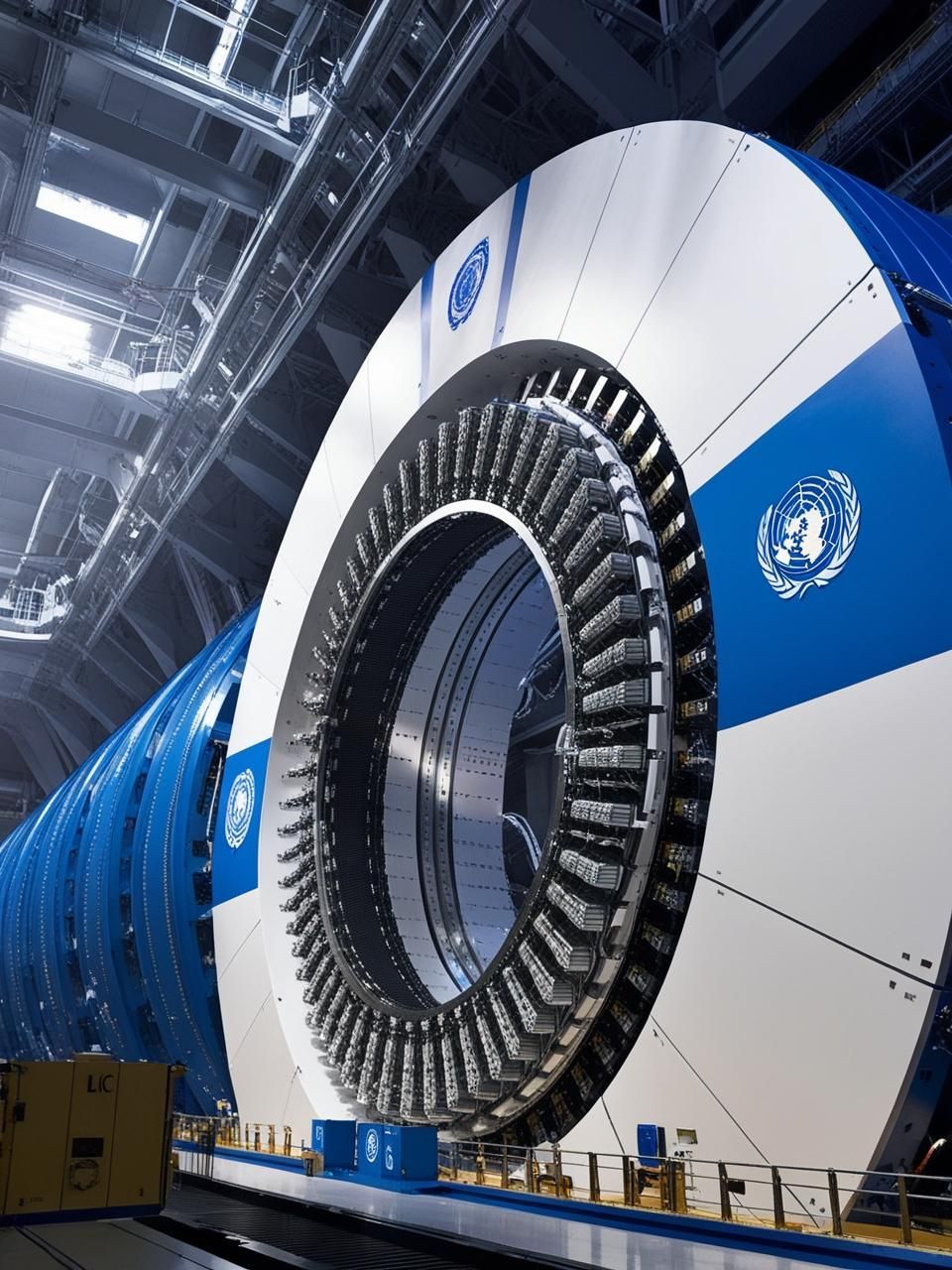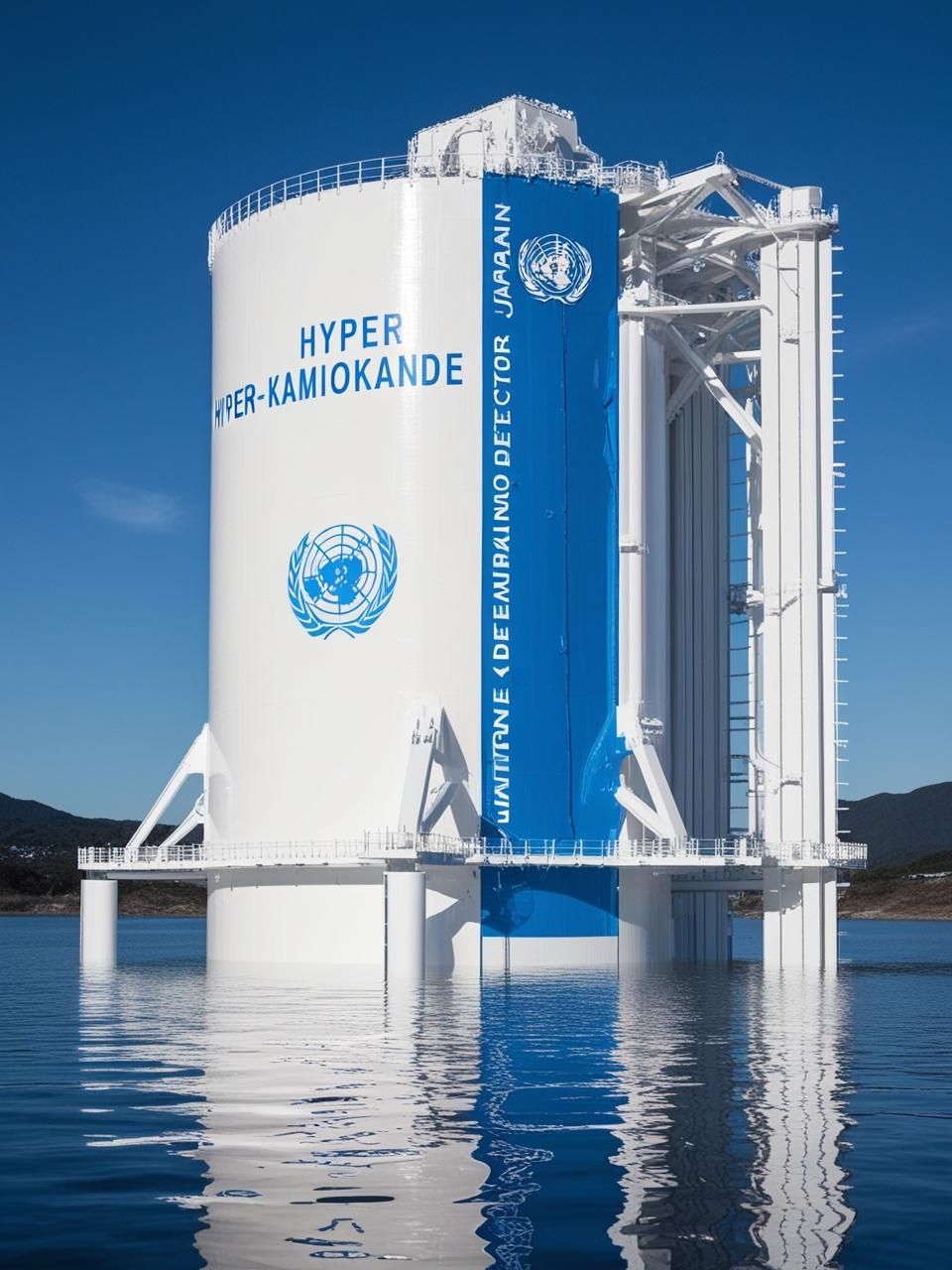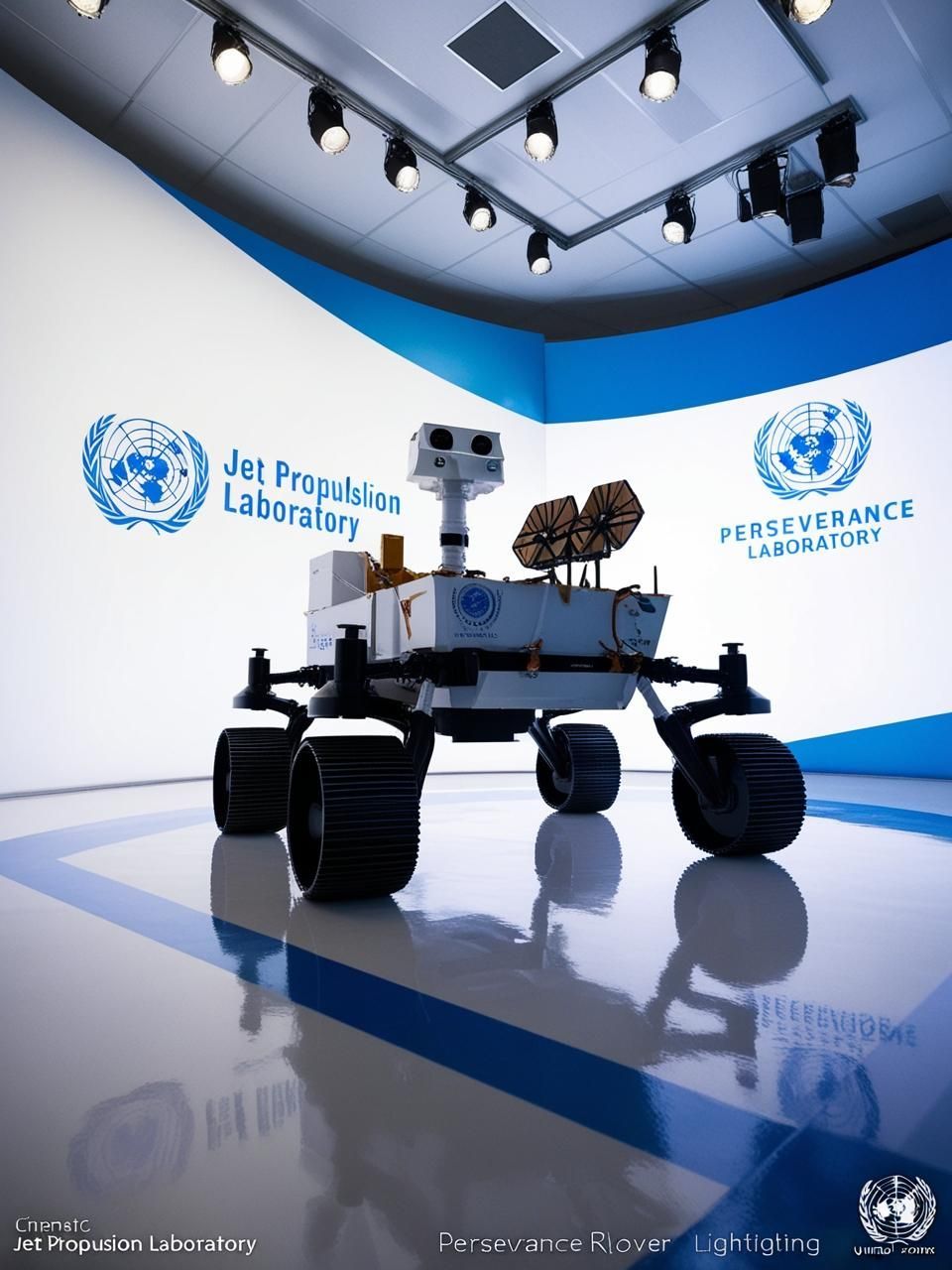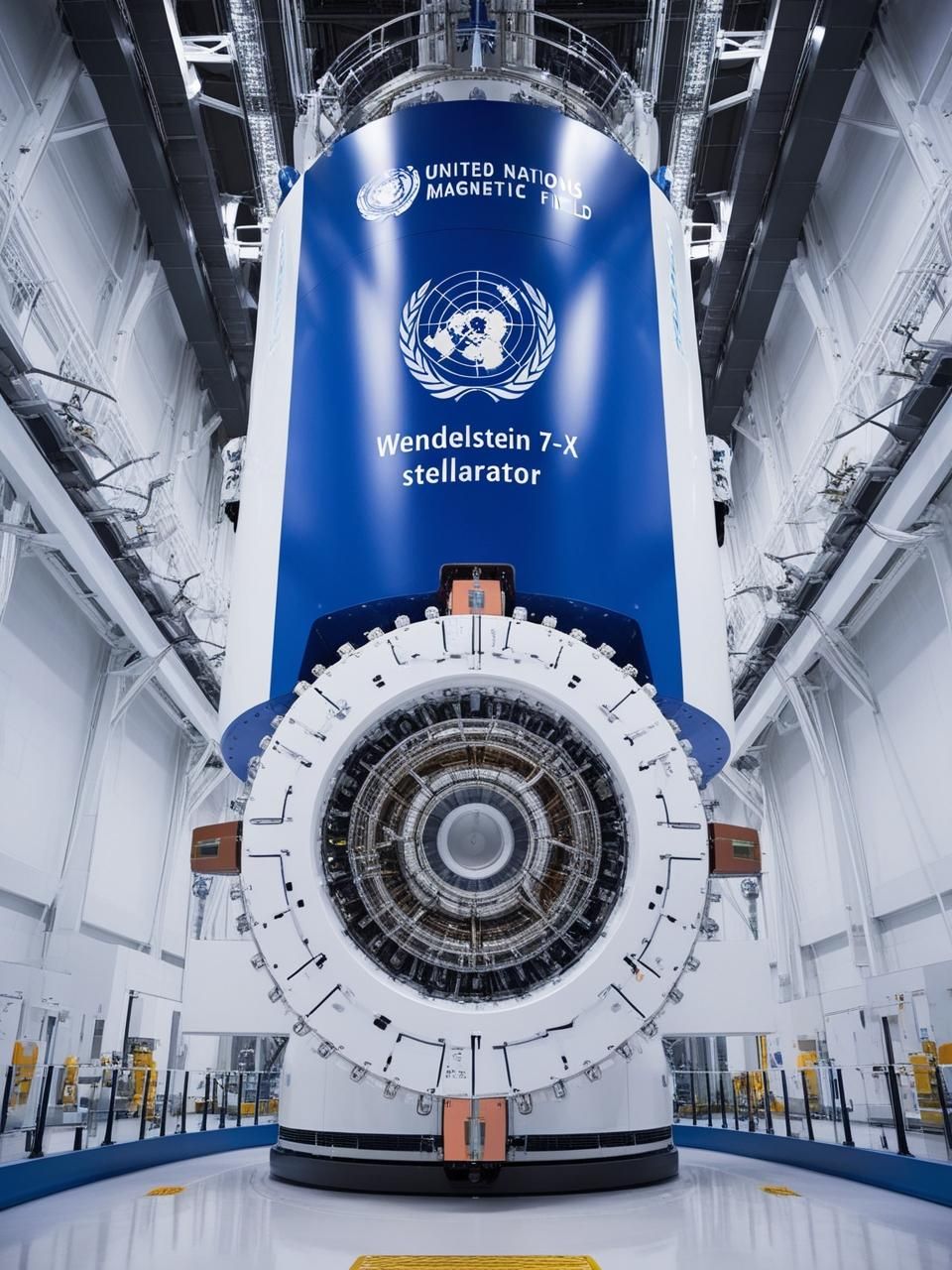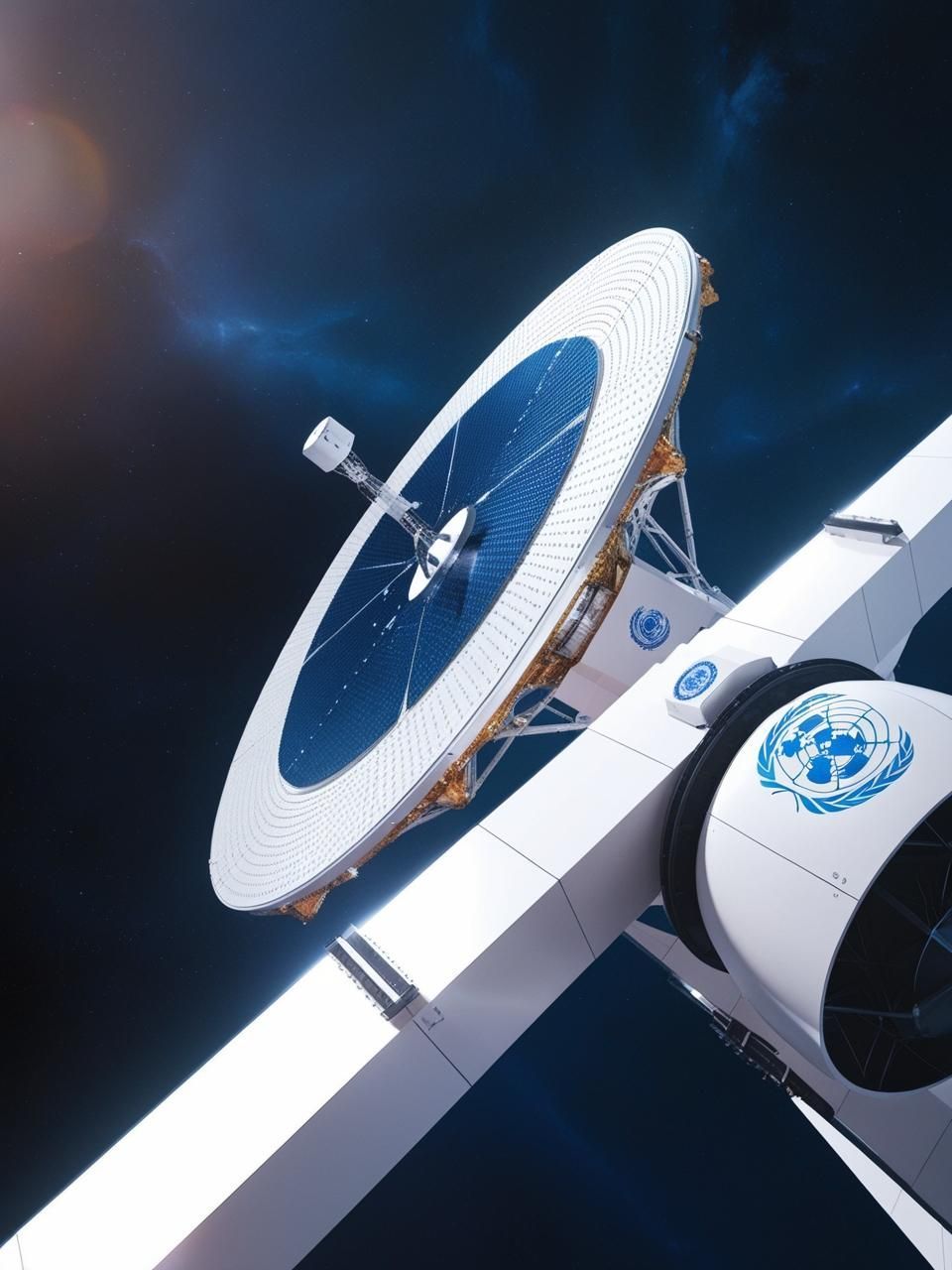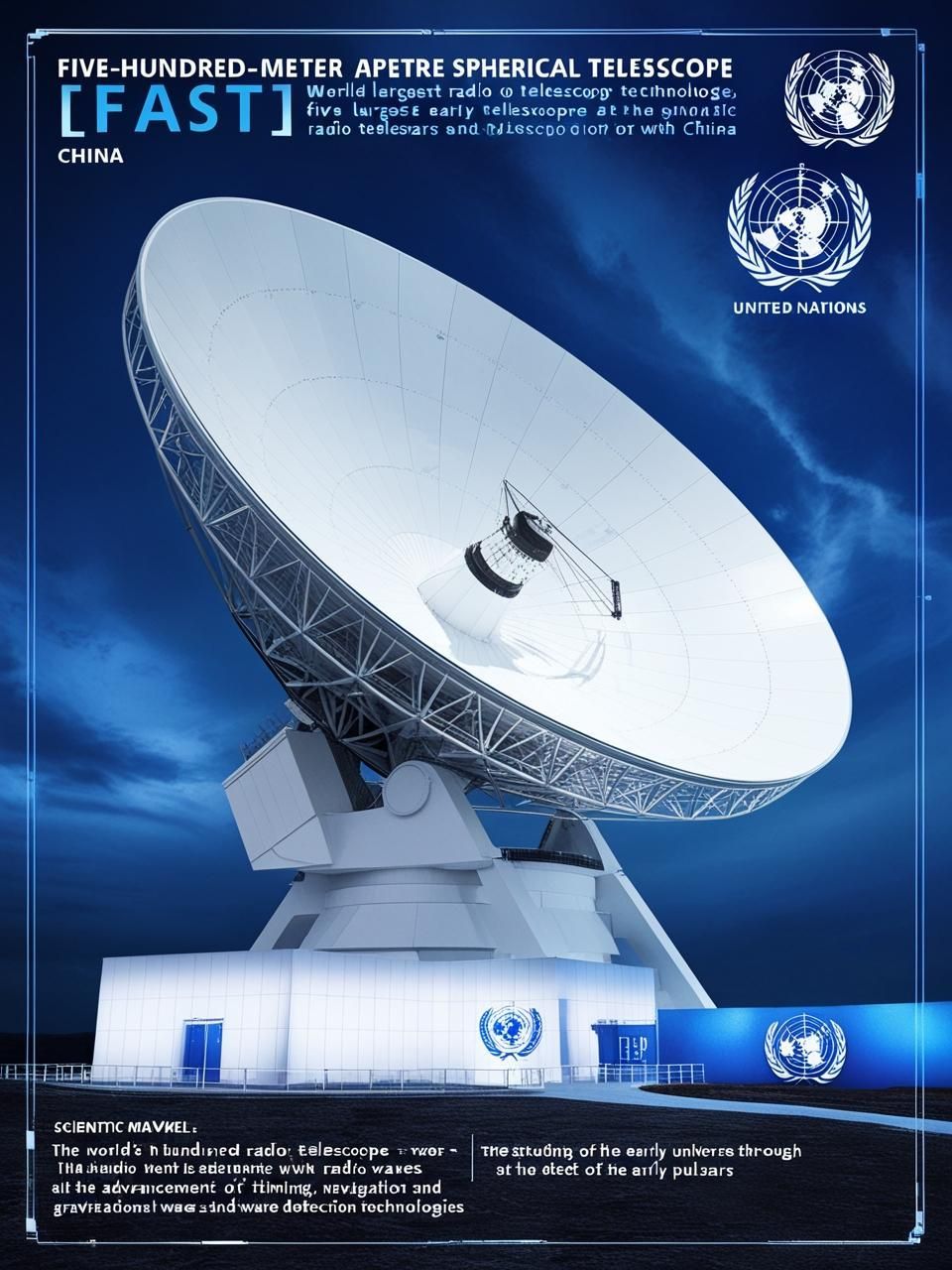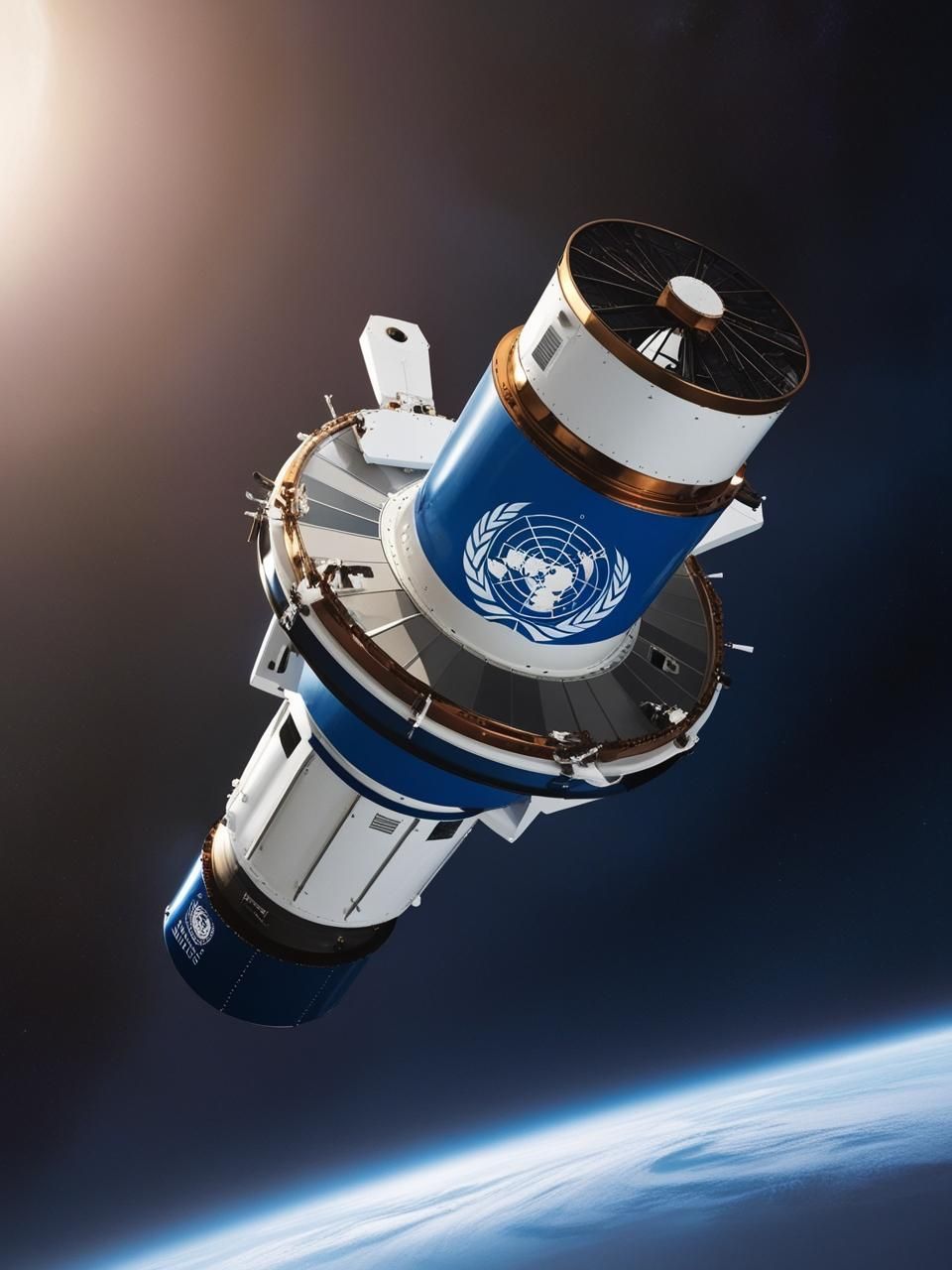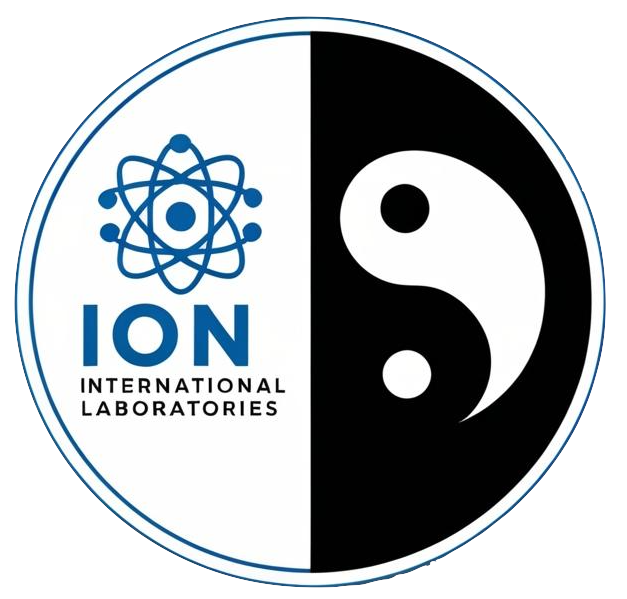
ION INTERNATIONAL LABORATORIES
ION INTERNATIONAL LABORATORIES
LARGE HADRON COLLIDER
The Large Hadron Collider (LHC) is the world's largest particle accelerator, located at CERN, the world's largest particle physics laboratory. The LHC is a 27-kilometer ring of superconducting magnets that accelerates protons and ions to near the speed of light. The magnets steer the protons, allowing them to collide at four points around the ring, producing massive particles like the Higgs boson and top quark. Scientists measure the properties of these particles to better understand matter and the origins of the universe.
WHAT IS ION?
INTERNATIONAL LABORATORIES, ARE A GLOBALLY SPONSORED “SKUNKWORKS” LIKE RESEARCH & DEVELOPMENT DIVISION OF THE UNITED INDUSTRIES. ENCOMPASSING THE UPMOST CUTTING EDGE SCIENTIFIC PROJECTS. MODELED AFTER THE US DEPARTMENT OF ENERGY'S NATIONAL LABORATORIES, LOCKHEED MARTIN SKUNKWORKS, BOEING & GENERAL DYNAMICS CLASSIFIED R&D SECTORS, AND NASA'S JPL. CONDUCTING RESEARCH ON METAPHYSICS, ENERGY & TECHNOLOGY FOR THE BENEFIT OF HUMANITY.
PROJECTS, INSTRUMENTS & TECHNOLOGY
The Obsidian Group
RUNNING ION'S Advanced Development Programs, THIS highly specialized division known for its innovative and rapid development of advanced APPARATUS and technologies. it's renowned for its unique culture of autonomy, rapid prototyping, and pushing technological boundaries. THE OBSIDIAN GROUP has produced iconic CLASSIFIED DEFENSE TECHNOLOGIES, and continues to develop cutting-edge solutions in areas like hypersonics and unmanned systems.
THERMONUCLEAR REACTOR
The International Thermonuclear Experimental Reactor (ITER) is a global research project that aims to demonstrate the feasibility of fusion energy as a future alternative to oil and coal. The European Union leads the project, which also involves the USA, Russia, Japan, South Korea, China, and India. The ITER is the world's largest experiment on the path to fusion energy.
LARGE HADRON COLLIDER
The Large Hadron Collider (LHC) is the world's largest particle accelerator, located at CERN, the world's largest particle physics laboratory. The LHC is a 27-kilometer ring of superconducting magnets that accelerates protons and ions to near the speed of light. The magnets steer the protons, allowing them to collide at four points around the ring, producing massive particles like the Higgs boson and top quark. Scientists measure the properties of these particles to better understand matter and the origins of the universe.
Hyper-Kamiokande
The Hyper-Kamiokande (Hyper-K) is a water Cherenkov detector that's being built in Japan to study neutrinos. The detector's purpose is to observe neutrinos from various sources, including cosmic rays, the Sun, supernovae, and artificially produced beams. The detector will also monitor water for proton decay in atomic nuclei.
INTERNATIONAL SPACE STATION
The International Space Station (ISS) is a large spacecraft that orbits Earth and serves as a home for astronauts and a science lab. It's the largest space station ever built and is the result of a collaboration between five space agencies: NASA (United States), Roscosmos (Russia), ESA (Europe), JAXA (Japan), and CSA (Canada).
SEMICONDUCTOR TECHNOLOGIES
a TSMC fab is a semiconductor fabrication facility, or fab, owned by Taiwan Semiconductor Manufacturing Company (TSMC). Fabs are the heart of the semiconductor manufacturing process, where integrated circuits, or chips, are created. TSMC is the world's largest "pure-play" semiconductor fab, meaning it manufactures chips from its customers' designs.
Perseverance rover
The Jet Propulsion Laboratory holds a unique place in the universe. We are a leader in robotic space exploration, sending rovers to Mars, probes into the farthest reaches of the solar system, and satellites to advance understanding of our home planet. The Perseverance rover is a car-sized robot designed by NASA's Jet Propulsion Laboratory (JPL) to explore Mars and search for signs of life.
Wendelstein 7-X
the Wendelstein 7-X is the world's largest fusion device of the stellarator type. Its objective is to investigate the suitability of this type for a power plant. It is testing an optimized magnetic field for confining the plasma. Built in Greifswald, Germany, by the Max Planck Institute for Plasma Physics (IPP).
NEURALINK INTERFACE
Neuralink is a brain-computer interface (BCI) that monitors and stimulates brain activity with the goal of helping people with paralysis communicate and control devices with their thoughts. Neuralink may help improve memory and cognitive abilities, restore motor, sensory, and visual functions, and treat neurological disorders. Initial users are expected to be people who have lost the use of their limbs.
QUANTUM COMPUTING
IN THE REALM OF QUANTUM COMPUTING, THERE IS A NEW 300,000 square foot facility with 1 million qubits, the world's largest quantum computer, is being built on a former steel site in Chicago. The facility will be built by PsiQuantum, a California-based firm, and will be the largest quantum computing facility in the United States.
MAGELLAN TELESCOPE
Upon completion, the Giant Magellan Telescope (GMT) will be the largest optical telescope in the world, producing images of the universe with 10 times the clarity of the Hubble Space Telescope. Slated to become operational by 2029, the GMT will explore the distant universe and look for signs of life outside our planet.
neutrino detector
The Hyper-Kamiokande (Hyper-K) is a water Cherenkov detector that's being built in Japan to study neutrinos. The detector's purpose is to observe neutrinos from various sources, including cosmic rays, the Sun, supernovae, and artificially produced beams. The detector will also monitor water for proton decay in atomic nuclei.
neutron Accelerator
The European Spallation Source (ESS) is a research facility in Lund, Sweden that uses neutrons to study materials at the atomic and molecular levels. The ESS is the world's most powerful neutron source, and its 100 times brighter beams will allow scientists to study the structure and function of matter. The ESS will enable applications in many fields, including medicine, biology, chemistry, physics, and engineering.
THERMONUCLEAR REACTOR
The International Thermonuclear Experimental Reactor (ITER) is a global research project that aims to demonstrate the feasibility of fusion energy as a future alternative to oil and coal. The European Union leads the project, which also involves the USA, Russia, Japan, South Korea, China, and India. The ITER is the world's largest experiment on the path to fusion energy.
APERTURE TELESCOPE
LOCATED IN CHINA, THE Five-Hundred-Meter Aperture Spherical Telescope (FAST) is the world's largest radio telescope. It's used to study the early universe by using radio waves to reconstruct images of neutral hydrogen atoms at the edge of the universe. Detecting faint pulsars, including thousands of new pulsars and the first pulsar in a spiral galaxy beyond the Milky WAY. Studying electromagnetic radiation from pulsars to develop timing, navigation, and gravitational wave detection technology.
NATIONAL IGNITION FACILITY
The National Ignition Facility (NIF) is the world's largest and most energetic laser system. It's located at Lawrence Livermore National Laboratory (LLNL) in Livermore, California. NIF is the size of a sports stadium and has 192 laser beams that can create temperatures and pressures similar to those in the cores of stars and giant PLANETS. delivering more than 2 million joules of ultraviolet energy and 500 trillion watts of peak power.
RADIO TELESCOPE ARRAY
The Square Kilometre Array (SKA) is the world's largest radio telescope array. It's made up of two arrays: SKA-Low in Western Australia and SKA-High in South Africa. SKA-Low has over 131,000 tree-shaped antennas that are about 6.5 feet tall. SKA-Low is eight times more sensitive than similar telescopes, has 25% better resolution, and can survey the sky 135 times faster.
LINEAR accelerator
Fermilab's original accelerator is called the Linac, or Linear Accelerator. It's a 500-foot straight accelerator that sends proton beams to the rest of the lab's accelerators. The Linac was first operational in 1970 with a 200 million electron volt capacity (MeV). It was upgraded to reach 400 MeV in 1993. In 2019, Fermilab broke ground on PIP-II, a new superconducting, 800 MeV linac that will replace the original Linac.
ACCELERATOR LABORATORY
The SLAC National Accelerator Laboratory (SLAC) National Accelerator Laboratory (SLAC) is a basic research laboratory that explores the world at all scales. SLAC's mission is to develop new techniques for high-energy accelerators and elementary particle detectors, and to conduct research in elementary particle physics. SLAC is also a world leader in the development of particle accelerators, which are complex machines that generate powerful particle beams for a variety of applications.
JAMES WEBB SPACE TELESCOPE
The James Webb Space Telescope (JWST) is a large infrared telescope that studies the history of the universe. It's the largest and most powerful telescope ever launched into space. JWST will study the first luminous glows after the Big Bang. It will also study the formation of solar systems that can support life on planets like Earth.
QUANTUM COMPUTING
IN THE REALM OF QUANTUM COMPUTING, THERE IS A NEW 300,000 square foot facility with 1 million qubits, the world's largest quantum computer, is being built on a former steel site in Chicago. The facility will be built by PsiQuantum, a California-based firm, and will be the largest quantum computing facility in the United States.
international space station
The International Space Station (ISS) is a large spacecraft that orbits Earth and serves as a home for astronauts and a science lab. It's the largest space station ever built and is the result of a collaboration between five space agencies: NASA (United States), Roscosmos (Russia), ESA (Europe), JAXA (Japan), and CSA (Canada).
semiconductor technology
a TSMC fab is a semiconductor fabrication facility, or fab, owned by Taiwan Semiconductor Manufacturing Company (TSMC). Fabs are the heart of the semiconductor manufacturing process, where integrated circuits, or chips, are created. TSMC is the world's largest "pure-play" semiconductor fab, meaning it manufactures chips from its customers' designs.
perseverance rover
The Jet Propulsion Laboratory holds a unique place in the universe. We are a leader in robotic space exploration, sending rovers to Mars, probes into the farthest reaches of the solar system, and satellites to advance understanding of our home planet. The Perseverance rover is a car-sized robot designed by NASA's Jet Propulsion Laboratory (JPL) to explore Mars and search for signs of life.
fusion stellarator
the Wendelstein 7-X is the world's largest fusion device of the stellarator type. Its objective is to investigate the suitability of this type for a power plant. It is testing an optimized magnetic field for confining the plasma. Built in Greifswald, Germany, by the Max Planck Institute for Plasma Physics (IPP).
data centers
The China Telecom-Inner Mongolia Information Park is a data center complex in Hohhot, Inner Mongolia that is considered the world's largest data center. A large group of networked computer servers typically used by organizations for the remote storage, processing, or distribution of large amounts of data. The park has attracted major clients such as IBM, HP, and Dell.
hubble space telescope
The Hubble Space Telescope (HST) is a space-based observatory that orbits Earth and provides high-resolution images and data about the universe. The telescope is named after astronomer Edwin Hubble. The Hubble Space Telescope was launched into orbit by the space shuttle Discovery on April 24, 1990. It orbits Earth at an altitude of about 340 miles and is about the length of a large school bus.
very large telescope
The very large telescope (vlt) is an astronomical facility operated since 1998 by the european southern observatory, located on cerro paranal in the atacama desert of northern chile. It consists of four individual telescopes, each equipped with a primary mirror that measures 8.2 meters in diameter. These optical telescopes, named antu, kueyen, melipal, and yepun.
neuralink interface
Neuralink is a brain-computer interface (BCI) that monitors and stimulates brain activity with the goal of helping people with paralysis communicate and control devices with their thoughts. Neuralink may help improve memory and cognitive abilities, restore motor, sensory, and visual functions, and treat neurological disorders. Initial users are expected to be people who have lost the use of their limbs.
interstellar space probeS
The ISP would be propelled by a solar sail or nuclear-electric propulsion. The mission would involve a direct hyperbolic trajectory that would take the probe to Jupiter after six to seven months. After that, the probe would travel at a speed of about 6–7 astronomical units (AU) per year, leaving the heliosphere after 16 years.
Contact Us
We will get back to you as soon as possible.
Please try again later.
TELESCOPE TECHNOLOGY & ARRAYS:
VERY LARGE TELESCOPE
The very large telescope (vlt) is an astronomical facility operated since 1998 by the european southern observatory, located on cerro paranal in the atacama desert of northern chile. It consists of four individual telescopes, each equipped with a primary mirror that measures 8.2 meters in diameter. These optical telescopes, named antu, kueyen, melipal, and yepun.
JAMES WEBB SPACE TELESCOPE
The James Webb Space Telescope (JWST) is a large infrared telescope that studies the history of the universe. It's the largest and most powerful telescope ever launched into space. JWST will study the first luminous glows after the Big Bang. It will also study the formation of solar systems that can support life on planets like Earth.
500M APERTURE TELESCOPE
LOCATED IN CHINA, THE Five-Hundred-Meter Aperture Spherical Telescope (FAST) is the world's largest radio telescope. It's used to study the early universe by using radio waves to reconstruct images of neutral hydrogen atoms at the edge of the universe. Detecting faint pulsars, including thousands of new pulsars and the first pulsar in a spiral galaxy beyond the Milky WAY.
MAGELLAN TELESCOPE
Upon completion, the Giant Magellan Telescope (GMT) will be the largest optical telescope in the world, producing images of the universe with 10 times the clarity of the Hubble Space Telescope. Slated to become operational by 2029, the GMT will explore the distant universe and look for signs of life outside our planet.
HUBBLE SPACE TELESCOPE
The Hubble Space Telescope (HST) is a space-based observatory that orbits Earth and provides high-resolution images and data about the universe. The telescope is named after astronomer Edwin Hubble. The Hubble Space Telescope was launched into orbit by the space shuttle Discovery on April 24, 1990. It orbits Earth at an altitude of about 340 miles and is about the length of a large school bus..
ION LABS - TECHNOLOGY & ENGINEERING:
This is paragraph text. Click it or hit the Manage T
ZERO POINT QUANTUM FIELD GENERATOR
In 2150, the Osean Capital, an offshore megastructure, showcased advanced technology powered by a Zero Point Quantum Field Generator, known as "the Pearl. " The Pearl provided wireless energy, protected the structure with force fields, and could manipulate environmental elements during disasters, symbolizing humanity's ingenuity and hope for the future.
This is paragraph text. Click it or hit the Manage T
This is paragraph text. Click it or hit the Manage T
ONE CRYPTO SYSTEM
Traditional stock markets and financial institutions are being replaced by a decentralized cryptocurrency system. This system allows people to invest in projects that positively impact humanity, focusing on scientific, energy, technology, and social advancements. Investments are based on human ideas and values, with financial gains returned to shareholders. Projects must benefit humanity to become public, enabling individuals to align their investments with their beliefs, thereby driving positive change.
This is paragraph text. Click it or hit the Manage T
This is paragraph text. Click it or hit the Manage T
ONE GENETIC & SEED VAULTS
a physical storage facility for DNA samples or a natural cellular structure called a "vault" that can transport molecules like DNA. In the context of data storage, it refers to a secure location for storing genetic information for future use. In the biological context, it refers to a specific cellular structure that acts as a delivery vehicle for various molecules. a secure facility designed to store seeds from around the world, acting as a backup for global gene banks and ensuring food security. The Svalbard Global Seed Vault, located on Spitsbergen Island in the Arctic, is a prominent example. Its primary purpose is to preserve crop diversity and genetic resources against natural disasters, war, or other events that could damage or destroy traditional gene banks.
This is paragraph text. Click it or hit the Manage T
Contact us any time
Contact Us
We will get back to you as soon as possible
Please try again later

